Animal eyes: style and amazing abilities
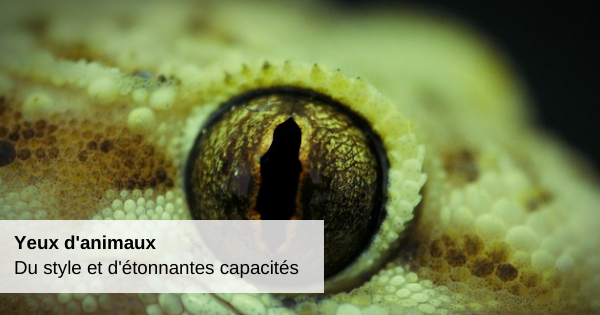
The mechanism of the eye , to enable it to see, is always the same. Light energy is perceived by the eye, which transforms it into electrical energy in order to transmit information to the brain. From one animal species to another, the operation is identical. What changes are especially the characteristics of the eyes as well as the number and type of information. All animals, including humans, have their own unique way of life. The eye therefore had to adapt to it. Best of all, the eyes of the animals are, as a bonus, often admirably beautiful.
Animal eyes: the perfect hunting tool
 The beautiful blue of a cat's eye @Pixabay [/ caption]
The beautiful blue of a cat's eye @Pixabay [/ caption]
Of course, the most important thing in the animal kingdom is to survive. For this, there is no other solution than to feed. And to eat, you have to hunt. The eyes of animals have the undeniable characteristic of adapting to the environment, as well as to the recommended hunting method.
Thus, chameleons, for example, have an eye that we always see very big in comparison to its size. The amazing parts of this eye are its circular pupil , and above all a lens of negative power . Associated with the cornea , it allows it to use its eyes as a telescope .
[Caption id = "attachment_10689" align = "aligncenter" width = "600"] 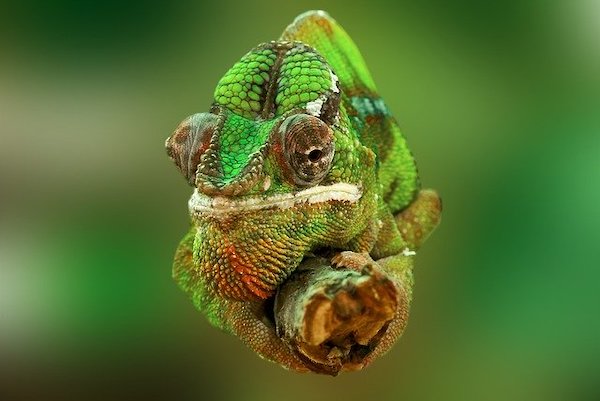 The chameleon's eye allows it to zoom in to find its tiny preys! @Pixabay [/ caption]
The chameleon's eye allows it to zoom in to find its tiny preys! @Pixabay [/ caption]
As the chameleon feeds exclusively on small insects, this zoom power is absolutely useful. But what about the development ? If the image grows, it is still necessary that the quality of it makes it usable by the brain.
Thanks to this system of opposing lenses , associated with a system of musculature in streaks, the development is done very quickly and very efficiently for an animal of this size. Aesthetically, too, the Chameleon's eye is very close to a camera lens!
[Caption id = "attachment_10695" align = "aligncenter" width = "600"] 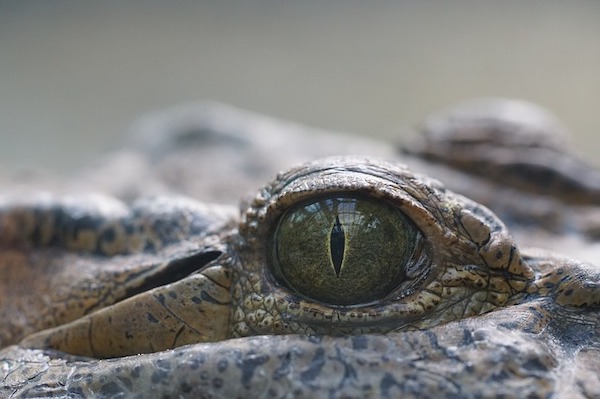 The vertical pupil, essential @Pixabay [/ caption]
The vertical pupil, essential @Pixabay [/ caption]
Vertical pupils allow many animals to improve their hunting performance. They are found on those who tend to hunt day and night. The dilation of this pupil allows them to see equally well in both cases.
One can quote the cat, the snake or the crocodile, which all have this capacity.
[ =]
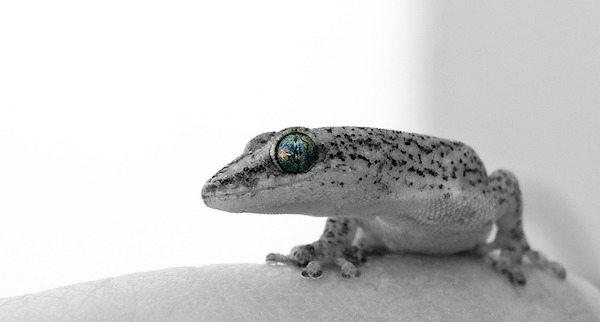 The Gecko has a vertical slit-shaped pupil with notches, offering significant surface variations @Pixabay [/ caption]
The Gecko has a vertical slit-shaped pupil with notches, offering significant surface variations @Pixabay [/ caption]
Amphibians precisely, have the particularity of being born in the form of aquatic larva and grow up with a terrestrial lifestyle. This allows them to be as comfortable in the water as outside. They therefore need an eye to be as efficient as possible in all configurations.
The vertical pupil widens the field of view in the direction of the widest pupil width, providing perfect vision in the perpendicular axis.
[= ]
This slit shape produces maximum quality in the direction away from the slit axis. As a result, reptiles see their hunting abilities on flat ground or underwater improved. A reduced pupil diameter provides a greater depth of focus for refracted light and prevents certain aberrations.
From a physical point of view, this feature offers us in addition to superb pictures!
The animal environment, an essential criterion
The eye is formidable in helping to find food, but also to protect itself or cope with the peculiarities of its environment . Ruminants, for example, have an eye with a slit pupil , this time oriented horizontally.
[Caption id = "attachment_10693" align = "aligncenter" width = "600"] 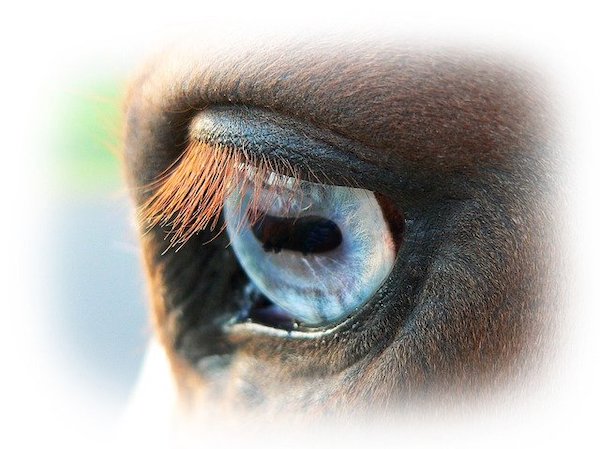 The horse and its horizontal pupil @Pixabay [/ caption]
The horse and its horizontal pupil @Pixabay [/ caption]
This particularity allows them to stay alert in particular when grazing, because the position of their head tilted forward then restores verticality and offers a vision wide enough to detect the arrival of possible predators.
As for the camel, it has a double row of eyelashes that filter the wind and sand, preventing their vision to be altered during the dreaded storms.
Even among certain species of dog, there are peculiarities that are not found in others, and which are strongly influenced by environment .
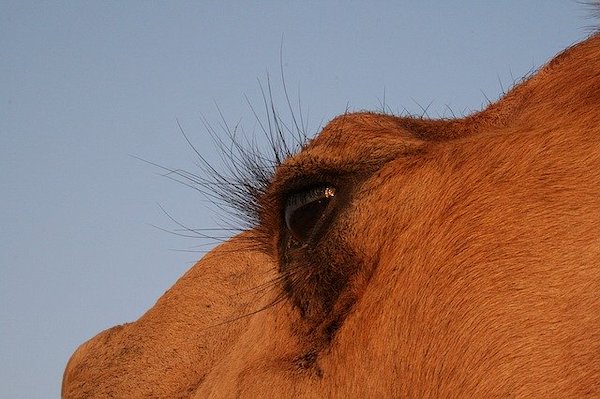 Long eyelashes to filter the sand @Pixabay [/ caption]
Long eyelashes to filter the sand @Pixabay [/ caption]
Let us take the example of the husky, a dog close to the wolf and destined to live in large cold and wild expanses. He has a perfect eye for spotting any movement on plateaus where visibility is particularly distant , unlike other dog breeds that do not have this ability.
[Caption id = "attachment_10697" align = "aligncenter" width = "600"]  Those beloved blue eyes! @Pixabay [/ caption]
Those beloved blue eyes! @Pixabay [/ caption]
What we can remember, then, is that the savagery of nature draws and makes the eyes of animals . Detection , whether it is hunting for food, protection from a predator or in order to find a congener, is the main element that allows, without superfluous element, to make each species unique.
If you want to know more, do not hesitate to dive into our file on the vision of animals !
[Caption id = "attachment_10688" align = "aligncenter" width = "600"] 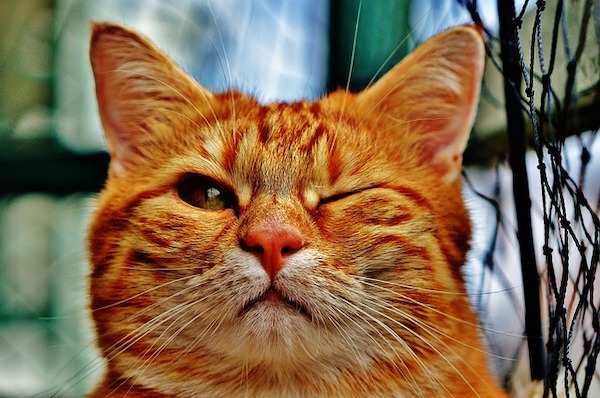 A nice wink @Pixabay [/ caption]
A nice wink @Pixabay [/ caption]
Sources: futura-sciences.com , Gatinel.com


